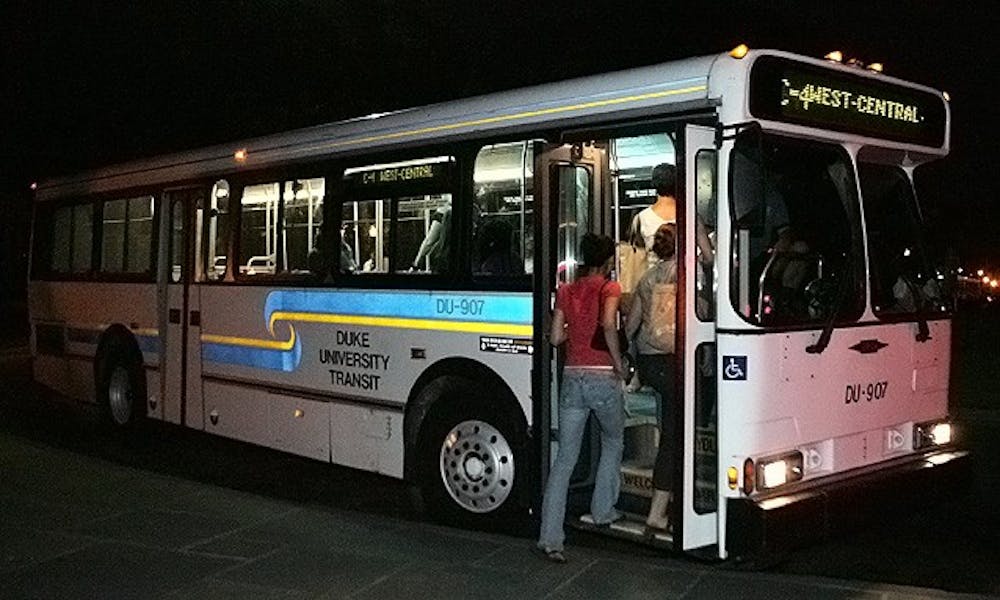Students racing to the bus stop to catch the C-1 will soon have bus locations at their fingertips.
Matt Ball, Pratt ’10, has been working with Parking and Transportation Services to create a new Web application that will allow the tracking of University buses online. The GPS-based application, which will cover all bus routes on campus as well as the Robertson and Safe Ride routes, is expected to be available by the Fall, said Sam Veraldi, director of finance for campus services.
“I think the problem with public transportation is you have so much less control over your own mobility,” Ball said. “If you have a system that can allow you to schedule better, I think it can increase people’s usage of buses and Safe Rides.”
Ball proposed the idea for a bus tracking system to Parking and Transportation. He said it was encouraging that administrative groups on campus were receptive to student input.
The University has considered other tracking systems, but Ball’s pitch was a more affordable and appropriate option, Veraldi said.
“It looked like a good application for us,” Veraldi said. “Students have been asking for something like this for some time.”
The buses will be equipped with prepaid Motorola mobile phones to allow tracking on an online map. Veraldi said the system will allow users to plan around unforeseen problems, such as accidents on the bus route.
Veraldi said that although the tracking system may not be a primary reason people will choose to use the bus, he hopes it may motivate some people to use it more often.
“We have commitments in our climate action plan to limit output of single occupant vehicles on campus,” Veraldi said.
The project will be funded by a $5,000 Student Development Directive grant from Duke Student Government. DSG President Mike Lefevre, a senior, said he heard about the project shortly after it was proposed to Parking and Transportation and thought it was a viable candidate for the grant.
“The argument we’re always told is that [the] buses, they run on a schedule, so why would you need a bus tracking system?” Lefevre said. “But everybody knows they’re [late].”
Ball said the initiative’s primary expenses would be the cost of the database and having the Office of Information Technology do server management. Parking and Transportation would cover all expenses that exceed the DSG donation, but a price estimate for the initiative still has not been set, Veraldi said.
“We didn’t go ask DSG for money, but it was really neat that DSG was reaching out and saying this is something we’d like to invest in,” Veraldi said. “We’ve got groups that you think would never be collaborating on a project like that. That’s pretty valuable to be able to do that.”
It is still unclear which website will host the new application, although it may eventually be integrated on Duke.edu, Ball said. He added that his team is hoping to find a way to post estimated arrival times on the website, as well.
In the future, the bus-tracking program may also be integrated into the Duke iPhone application, DukeMobile, Ball said. It may also be possible to link the system to other mobile devices via SMS, but that it is not something the group is working on at the moment, he added.
Get The Chronicle straight to your inbox
Signup for our weekly newsletter. Cancel at any time.

